Ian Lambot co-wrote the well-known book about Kowloon Walled City, "City of Darkness". Here I ask Ian about the new and expanded edition, "City of Darkness Revisited".
David: The book is full of beautiful photos - do you have a favourite?
Ian: Where to begin! Should it be the aerial image I took one misty evening in, I think, 1989, which now appears all too regularly – and almost invariably without permission – on any website about the Walled City you care to mention?
Or should it be one of the City’s dark and dank alleys, lined above with the innumerable water pipes and electricity cables that had accumulated, layer upon layer, as successive residents of nearby buildings each installed their own supply? It became impossible to work out which pipe still held running water and which had fallen into disuse, but either way one had to run the gauntlet of unknown drips and ever slippery alleyways.
But then I realised that the one aspect of the City I photographed more than any other and, indeed, what had drawn me to photograph there in the first place was its rich and articulated elevations, and especially the caged balconies that seemingly lined every surface. Of course, these weren’t unique to the Walled City. I first arrived in Hong Kong in 1979 and in those days one could see caged balconies on most of the older tenement buildings. The streets around the back of Yau Ma Tei and Mong Kok were lined with them I remember, but their sheer profusion, on the Walled City’s south and east elevations in particular, had turned them into something of an art form.
At one level they appealed to the craftsman in me. At first glance they seemed to be very similar, but the more one looked, the more you realised that each fabricator and workshop had their own particular style. And although their purpose was entirely functional – a way of adding a little extra space to far too small and crowded apartments – each was decorated with unnecessarily complicated curlicues, arches and other geometric patterns, all given a sense of uniformity by their coatings of pale green or orange anti-rust paint.
The real fascination, though, was that they allowed the passer-by a glimpse into a multitude of people’s lives, a little like walking past homes on an English winter afternoon when the lights have been switched on but before the curtains are drawn. Here among the invariable washing put out to dry, were buckets and storage boxes, delicate bamboo birdcages, perhaps a child’s bicycle, and always somewhere or other flower pots, some with living plants growing out of them. Here was a wonderful patchwork of everyday life.
Sadly, in the name of progress, health and safety or just the elimination of ‘illegal’ structures, like the Walled City itself caged balconies have disappeared entirely from Hong Kong and I am sure I am not the only one who finds the urban street-scene the poorer for it. Hopefully, the pictures here will bring back warm memories of how Hong Kong used to be – and not that long ago.
David: Why did you decide to make this new edition? After all, the original book has been in print for 20+ years, and is still popular.
Ian: To my continuing astonishment, as you point out, the original edition remained in print for close on 20 years.
It was produced in a pre-digital age – difficult to imagine now – and only existed on the original films from which the printing plates are produced. As a consequence, changing anything apart from the cover was all but impossible.
For various reasons aspects of the City’s growth and recent history had been omitted from the original book, which had always bothered me, so the idea of an all-new edition had crossed my mind several times. But it was the approach of the 20th anniversary of the City’s demolition that provided the real impetus. It just seemed the right time to bring the story up to date.
David: I already have a copy of the original book, so should I buy the new one? How much new and different material will there be?
Ian: Naturally, we will be using all of the best of the photographs and resident interviews from the original edition again, though reorganised and reformatted, and both Greg and I have found a number of really very good photographs we took at the time that somehow never made the cut. Most importantly, though, the passing of 20 years has allowed us to go back and thoroughly research the history of the City’s growth from 1949 onwards; to look again at the City’s complicated legal and political standing and how this affected every aspect of life there.
Another section will explore the reality of the Triads’ influence there, which was indeed considerable for a few short years in the 1950s and early 1960s, but nowhere near the extent of the myths that continue to swirl around the place; and finally we have looked at how the City – in reality and myth – continues to influence popular culture to this day.
And all of this will be illustrated with a veritable treasure trove of new drawings, documents and photographs that have some to light over the past few years, many previously unpublished.
((David: Or by numbers - the original book had just over 200 pages, the new one is 50%+ bigger at well over 300 pages.))
David: I'm very interested to see you're using Kickstarter to raise the money for this project, as it's something I'd like to try. Why did you decide on Kickstarter?
Ian: Funding of some kind was absolutely essential. Though we are calling this a new edition, in reality it is an entirely new book. All of the photographs have had to be digitally rescanned, the whole book has been totally redesigned and, of course, there is a considerable amount of new material, which means that what was a relatively modest 200-page book has now expanded to 300 pages plus. Including all the research, this has been a very expensive exercise.
Greg and I have funded this entirely so far, but the final production and printing involves another level of magnitude that is frankly beyond us. We needed some form of support, but raising any form of sponsorship from either government, companies or individuals here was proving nigh-on impossible. It can also involve various provisos, so I just found the democracy of the Kickstarter approach much more appealing.
We were lucky in that we already had a quite a good fan-base so it seemed a good way to go. I have to say though, I hadn’t realised quite how emotionally draining the level of immediacy and exposure it involves would be.
David: Are there any questions you would like to ask Gwulo’s readers?
In general I think we have done quite well and, as I say, we have turned up a lot of really good new material. The one area that has proved almost impossible to source, though, are photographs of the Walled City during the 1950s and early 1960s. If anybody has any pictures from that era I would love to include them in the book. Otherwise, we are compiling on our website, all sort of personal recollection, all of which I find fascinating, so I’d love to hear from anybody with a good story to tell as well.
Ian and co-author Greg Girard have taken a different approach to funding this new book. They are using Kickstarter to raise money from supporters who want to see the book published. Supporters commit to buy a copy of the book when it is published, which guarantees the funds are available to finish the project.
To support this project visit their Kickstarter page:
https://www.kickstarter.com/projects/1060791749/city-of-darkness-revisi…
And if you'd like to learn more about the book's contents visit:
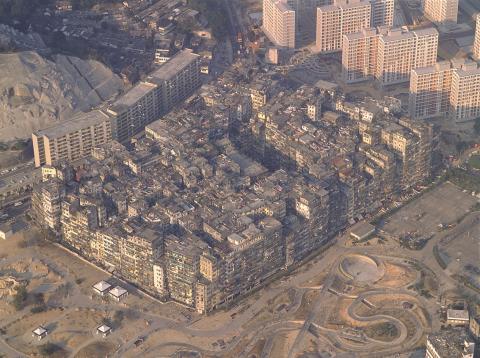
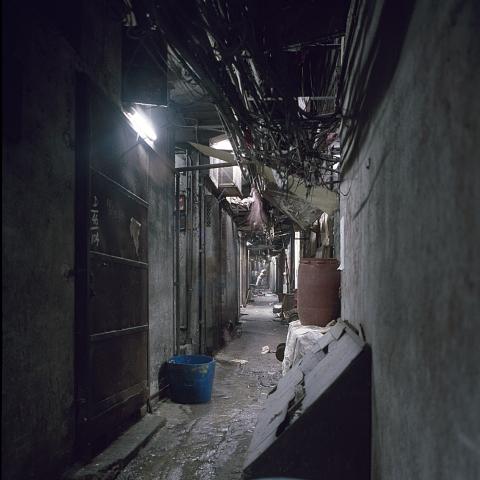
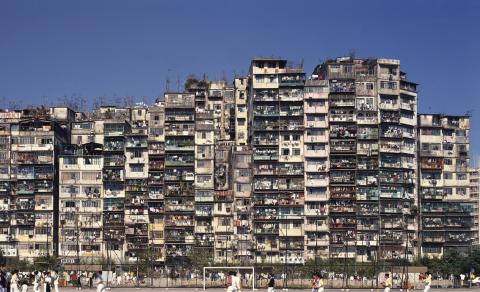
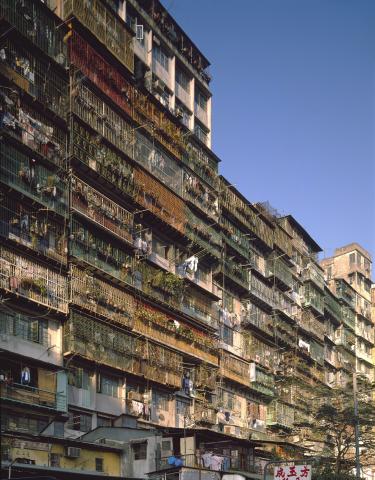
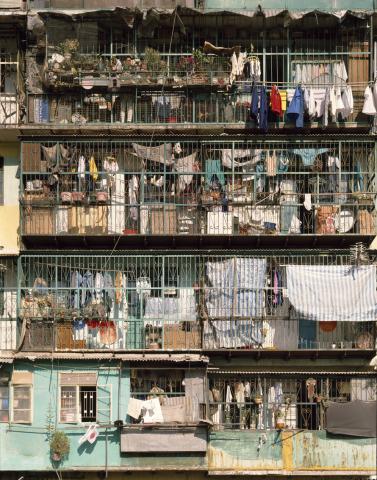
Comments
Aerial photo
I hope you got his consent to use that photo here ;-)
walled city
one afternoon a bunch of kgvers decided to pay the walled city a visit after school. it was a short bus ride away, can't really remember what inspired us to do that only that it must have been in the news and sounded like a really exciting place. big non-event as it happened, looked like a version of shamshuipo only in worse state of disrepair! we walked round the perimeter and when two of the boys decided they would like to have a look inside, their entrance was barred by two guys in flip flops who told us all where to go in no uncertain and most direct cantonese gutter talk. so we scarperd pretty damn quick!! (sometime 1972 or 3)
my mother was a volunteer at a day care centre located inside some time in the 70s. later she told me that on the days she went, her strategy never varied, park at exactly the same spot, head directly to the same entrance and keep looking at the floor until reaching the said centre
another schoolfriend of mine,
another schoolfriend of mine, the renowned artist (www.fionahawthorne.com) spent a couple of months sponsored by her college in the 80s. she has shared her fabulous sketches, watercolours and some photos in an album on facebook which is open to the general public to peruse. perhaps ian might like to contact fiona with a view to them sharing some of these unique visions on the walled city. just a thought. i will let fiona know about this post anyway. her album is on the link below
https://www.facebook.com/fiona.hawthorne/media_set?set=a.15681139434949…
Thanks Vanessa, I've let Ian
Thanks Vanessa, I've let Ian know.
Regards, David
Walled City
Work took me in there regularly during the early 1960's. First with a local colleague then alone after it was established I was not a copper nor a nark. Crumpled tinfoil, drinking straws and clumps of spent 'free' matches littered the usually wet and slippery dark alleyways. The HK war-cry with spit residue everywhere, scurrying rats and stench of sewage worse than an open nullah. All this and its emaciated 'residents' made it not a nice place to go.
There was nothing glam about the Walled City.
H.
The Walled City in 1949
Bill Griffiths writes:
I can remember quite vividly being told when we arrived in Hong Kong way back in 1949...that this walled city was definitely OUT OF BOUNDS to us as young soldiers, and it would have been a military offence at this time, and we were told, that, true or not ?...some people that entered this city were never seen again, and that it was the home of sorts of Triads etc....
At this time, even the back streets just off, and paralell with Nathan Road were 'Out of Bounds' to us, and quite a few young soldiers who ignored this were found severely beaten up, with not a trace of who did this.
Kowloon Walled City
As a toddler in the mid-1950s, I lived briefly at Carpenter Road / Junction Road in the outskirt of the KWC. I remember watching the massive police raids of drug divans. The huge number of siezed paraphrenalia such as opium guns and lights were laid out in the street below our apartment. At that time. Junction Rd was a dead end where the Holy Family School was being built - beyond was the foothill of Diamond Hill.
In the 70s, I entered the KWC a number of times as a policeman for various tasks, including raids on vice dens as the '633' HQ Vice Squad, or bringing in some Blue Berets to protect Housing Department demolition teams.
But the most profound experience was one evening when Jackie Pullinger took me (off-duty) and a friend (daughter of a Puisne Judge) into the KWC. As we walked throught he dark alleys with trepidation, she would be, like the Pied Piper, greeting all sorts of young Triads who were obviously playing 'Observers' for the Vice Dens These people would leave their posts and followed her to an old house in the middle of the KWC. There they sat and chatted and prayed and sang hynms, not on the initiative of Jackie, but initiating it themselves. The Triad youth knew I was a policeman, but they have no reservation of my presence, and we interacted like friends. It was surreal and I was very moved.
Later, I asked Jackie if I could revisit again. She said I would be welcomed, except that I must make a commitment to go all the time, that I should not come with any presumption that I have any solution for them, except that I care. She said these youths had been abandoned by so many people for so many times that they need not another do-gooder with fleeting passion to abandon them yet again. She also said that they could only get out of the situations in which they were stucked by transcending spiritually.
Regretably, my life was too full to make that commitment, and hence did not return. But the experience engendered a heart in my police work.
Lawrence, that visit with
Lawrence, that visit with Jackie Pullinger is a wonderful story. Thanks for letting us know about it.
Regards, David
Good news about the City of
Good news about the City of Darkness Revisited - they reached their Kickstarter target at the end of last week.
Congratulations to Ian and Greg,
Regards, David
wonderful interactive page
wonderful interactive page with plenty of testaments (all subtitled in english) as to life in the walled city. recommend
http://projects.wsj.com/kwc/#chapter=intro
Thanks Vanessa, good find!
Thanks Vanessa, good find!
Re: City of Darkness Revisited
Hi there,
They now have a Chinese version, just out last week. (http://www.cp1897.com.hk/product_info.php?BookId=9789888340897). Available in leading local book chains, as well as some on-line stores. The footpring of the Chinese is a bit smaller, but it is just as thick. It's a soft cover though, printed colour just as vibrant. It is slightly cheaper then the original too so if you missed the English version last year and if you can read Chinese, this is your chance to own a copy. Thanks & Best Regards,
T
City of Darkness Revisited - Chinese edition
Hi Thomas,
Thank you for letting us know about a Chinese edition. Is the content the same as the English edition, i.e. with no updates or abridgement? Was the translation done well? Thanks again.
Re: City of Darkness Revisited - Chinese edition
Hi there,
I am unable to do a page by page comparison. I have the English version (bought at the exhibition last year) but I have not gone through every page of it yet. If I buy the Chinese version too the wife is going to kill me. Maybe later, when both version are available in libraries.
According to this site, the Chinese version seemed to have kept all the photos of the English version. The translated text had been re-arranged a bit though.
Thanks & Best Regards,
T